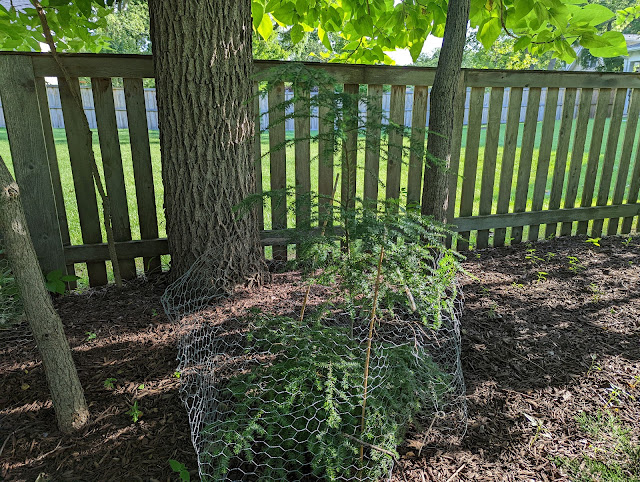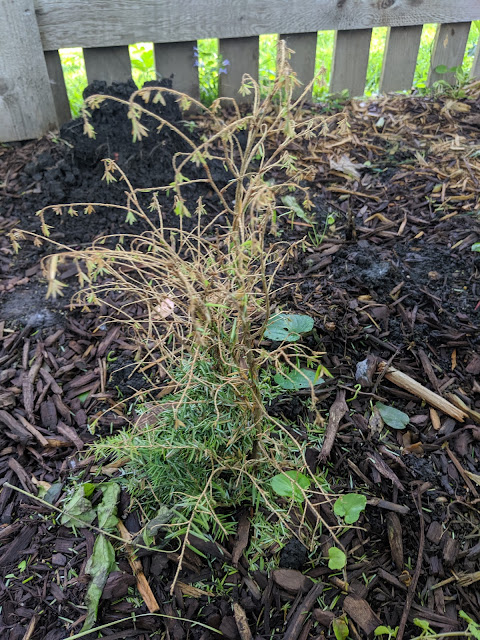Pair of Understory Canadian Hemlock Trees Growing Up - Summer 2024 - July 2024

Back in May of 2019, I planted a number of very small, one-gallon Canadian Hemlock trees . A few of them were destroyed by rabbits. And a few died from drought. But, two of them have managed to make it to today. In terms of growing seasons, that: 2019, 2020, 2021, 2022, 2023 and now...in the middle of their sixth growing season: 2024. After the rabbits ate these things up, I began to protect them with chicken wire. The past few seasons, I've just left the chicken wire rings in place. And the trees have just kept-on-growing. I heard from someone on the blog about the hemlocks and they wondered how they were doing. Here's a couple of photos that show them - although...they're *hard to see*. The first photo shows both of the trees - one on the left and the other on the right - split by that narrow tree trunk in the middle. The second photo shows a close-up of the chicken wire ring. I'd say that ...









